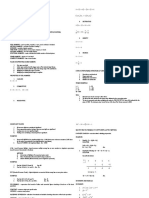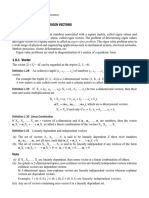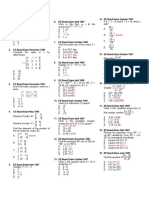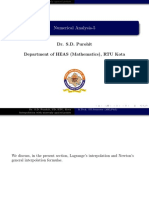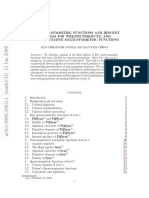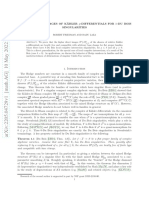0% found this document useful (0 votes)
15 views5 pagesAdvanced Arithmetic Operations Part 5
The document covers advanced arithmetic operations including subtraction of sums and differences, factorials, combinations, matrix arithmetic, modular exponentiation, prime factorization, complex numbers, summation, Fast Fourier Transform, and continued fractions. Each topic is briefly explained with rules, formulas, and examples. These concepts are applicable in various fields such as mathematics, physics, engineering, and cryptography.
Uploaded by
Rehan ZahidCopyright
© © All Rights Reserved
We take content rights seriously. If you suspect this is your content, claim it here.
Available Formats
Download as DOCX, PDF, TXT or read online on Scribd
0% found this document useful (0 votes)
15 views5 pagesAdvanced Arithmetic Operations Part 5
The document covers advanced arithmetic operations including subtraction of sums and differences, factorials, combinations, matrix arithmetic, modular exponentiation, prime factorization, complex numbers, summation, Fast Fourier Transform, and continued fractions. Each topic is briefly explained with rules, formulas, and examples. These concepts are applicable in various fields such as mathematics, physics, engineering, and cryptography.
Uploaded by
Rehan ZahidCopyright
© © All Rights Reserved
We take content rights seriously. If you suspect this is your content, claim it here.
Available Formats
Download as DOCX, PDF, TXT or read online on Scribd
/ 5
































